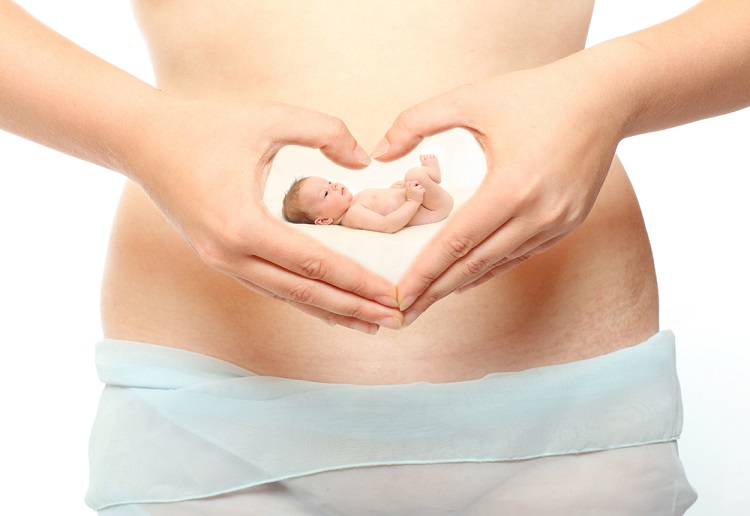Caesarean section versus natural birth – an obstetrician examines a new review.
Stefan Hansson, Lund University
Last week we shared on MoM that researchers are concerned about the long-term implications of C-section – A recent study found babies born via caesarean are 59 percent more likely to be obese by the age of five.
Stefan Hansson, Professor in Obstetrics and Gynaecology, from Lund University has shared his thoughts on the research.
Births by caesarean section are rising, worldwide. The latest figures (2016) show that 25% of births in Western Europe were by caesarean delivery; in North America it was 32%, and in South America 41%. Given these statistics, it’s not surprising that people are interested in new evidence that looks at the potential harms (and benefits) of this procedure. However, I read the latest review of the evidence with mixed feelings.
The review, published in PLOS Medicine, focused on three main outcomes: pelvic floor problems in the mother (such as urinary incontinence), asthma in the child, and death of the child in subsequent pregnancies (stillbirth or neonatal death). The headline findings were: compared with vaginal delivery, there is a decreased risk of urinary incontinence and vaginal prolapse with a caesarean delivery. There is an increased risk of asthma in children delivered by cesarean section, up to the age of 12. And pregnancy after caesarean delivery was associated with increased risk of miscarriage and stillbirth, but not of neonatal death.
As a scientist, I can appreciate the effort made in conducting a systematic review on the topic, but as an obstetrician I worry that the results can be over-interpreted by patients – not to mention obstetricians and midwives – and caesarean section “marketed” as a safe way to avoid pelvic floor problems.
The results of the study, conducted by the University of Edinburgh, are based on an analysis of the combined data (a “meta-analysis”) of one large randomised controlled trial and 79 observational studies, all from wealthy countries.
Overall, it is a well-conducted review. But there are weaknesses (which the authors acknowledge), such as not taking into account the type of caesarean section (emergency versus planned operations) and not taking into account the stage of labour when the operation was done. (Performing a caesarean section during the late stages of delivery is probably going to harm the pelvic floor in some ways.)
Driven by fears of urinary incontinence
As an obstetrician, I meet many women who are concerned about their coming delivery and have a strong wish for a safe caesarean section. They often think it is a good way to avoid the pelvic floor problems that can occur after a natural birth. The benefits of a caesarean section for preventing pelvic floor problems are widely debated on social media, and in parenthood and pregnancy magazines, which contributes to the increased demand for caesarean deliveries.
Women are well aware of the discomfort and embarrassment associated with urinary incontinence and have an understandable fear of sexual dysfunction. But despite the reported findings that suggest decreased risk with a caesarean delivery, these problems are manageable, treatable and, importantly, not life threatening.
There are, however, life-threatening risks associated with a caesarean delivery on subsequent pregnancies, including increased risk of miscarriage, stillbirth and problems with the placenta – such as placenta praevia (the placenta covering the birth canal), placenta accreta (when the placenta grows too deep into the wall of the uterus) and placental abruption (where the placenta partially or completely separates from the womb before the baby is born).
A caesarean section delivery can also affect children. The results from this latest review show that it increases the risk of childhood asthma (21% increased risk) and the risk of obesity (59%) in children up to the age of five, compared with children born by vaginal delivery.

Caesarean section is associated with an increased risk of obesity in the child.
thechatat/Shutterstock
All risks are not created equal
Clearly, it does not make sense to compare the risk of urinary incontinence, say, with the risk of a stillbirth. Obstetricians are aware of the various risks of caesarean versus vaginal delivery and should help to guide the patient in making a decision. In order to prevent any further increase in the caesarean section trend, obstetricians need to take responsibility for how this information is conveyed to patients, taking the patient’s full reproductive life into account, and also aiming to minimise the risks for any following pregnancies.
![]() It is an educational and ethical challenge for doctors to balance the potential risk factors of current versus future pregnancies. While women are being given more choice, I don’t think that it is ethical or advisable to let the patient prioritise between different outcomes as the authors suggest. Rather, patients should be informed of all of the risks – at all life stages, for mother and child – and assess their options based on that.
It is an educational and ethical challenge for doctors to balance the potential risk factors of current versus future pregnancies. While women are being given more choice, I don’t think that it is ethical or advisable to let the patient prioritise between different outcomes as the authors suggest. Rather, patients should be informed of all of the risks – at all life stages, for mother and child – and assess their options based on that.
Stefan Hansson, Professor in Obstetrics and Gynaecology, Lund University
This article was originally published on The Conversation. Read the original article.
Read more
- RESEARCHERS concerned of long-term implications of c-section
- HOW Caesarean births are linked to developmental delays
Share your comments below
We may get commissions for purchases made using links in this post. Learn more.




















-

-
-
-
mom81879 said
- 31 Mar 2019
Reply
-

-
-
-
june11 said
- 11 Feb 2018
Reply
-

-
-
-
Ellen said
- 30 Jan 2018

Reply
-

-
-
-
nealsq said
- 29 Jan 2018
Reply
-

-
-
-
mom160421 said
- 29 Jan 2018
Reply
-

-
-
-
mom206279 said
- 29 Jan 2018
Reply
-

-
-
-
mom90758 said
- 29 Jan 2018
Reply
Post a comment4:00 pm
2:06 am
7:54 am
9:25 pm
5:31 pm
2:58 pm
2:38 pm